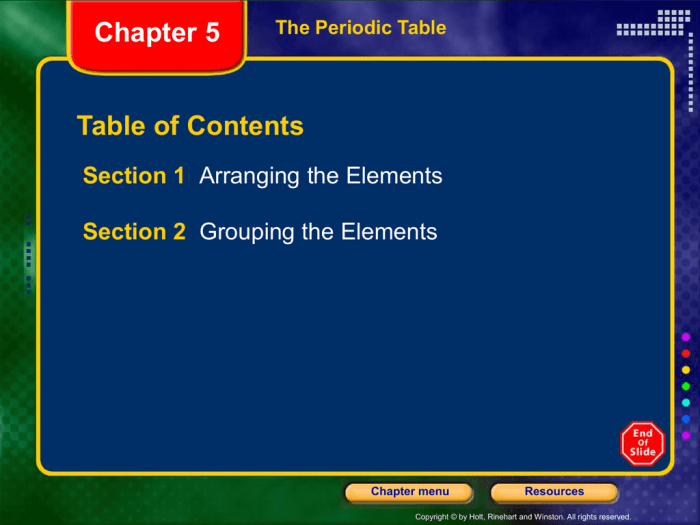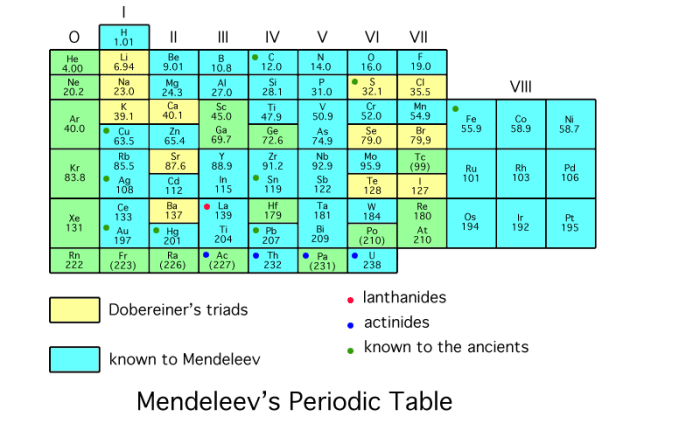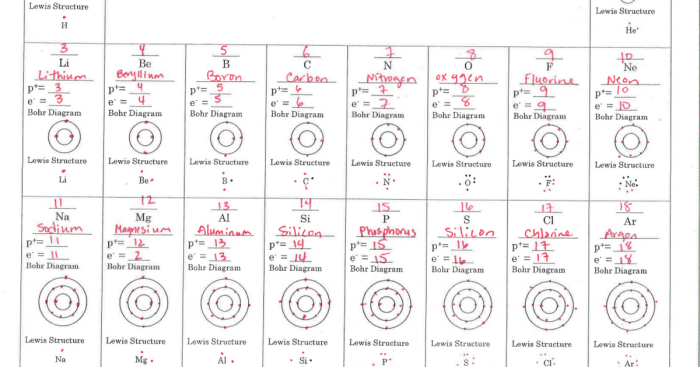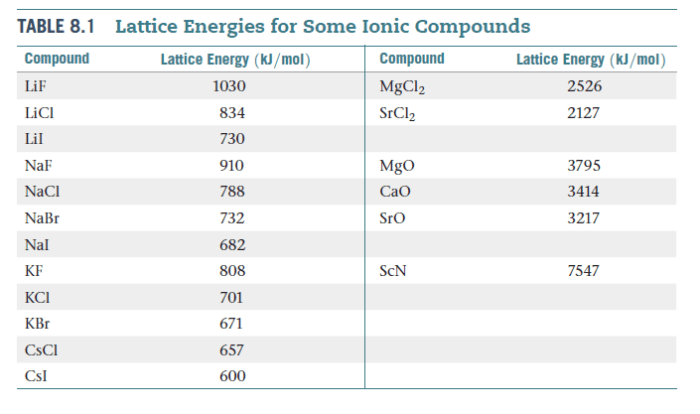Chapter 5 the periodic table answer key – Chapter 5: The Periodic Table Answer Key unlocks the door to a comprehensive understanding of the periodic table, a cornerstone of chemistry and a guide to the properties and behaviors of elements. This chapter provides an in-depth exploration of the periodic table’s organization, trends, and applications, offering a key to deciphering the secrets of element behavior.
Delving into the periodic table’s intricacies, we uncover the periodic trends that govern element properties, enabling us to predict their characteristics and reactivity. We delve into the diverse groups and families that populate the table, examining their similarities and differences to gain insights into element behavior and applications.
Elements and Their Properties

The periodic table is a tabular arrangement of chemical elements, organized on the basis of their atomic number, electron configuration, and recurring chemical properties. It is generally accepted that the modern periodic table was first published by Dmitri Mendeleev in 1869, although several other scientists had developed similar tables prior to this.
The periodic table is divided into 18 vertical columns, called groups, and 7 horizontal rows, called periods. The groups are numbered 1-18 from left to right, and the periods are numbered 1-7 from top to bottom.
Elements in the same group have similar chemical properties, as they have the same number of valence electrons. Valence electrons are the electrons in the outermost shell of an atom, and they determine the chemical reactivity of the element.
Elements in the same period have the same number of electron shells. As you move from left to right across a period, the number of valence electrons increases, and the chemical properties of the elements change.
Periodic Trends, Chapter 5 the periodic table answer key
There are a number of periodic trends that can be observed in the periodic table. These trends include:
- Atomic radius: The atomic radius of an element is the distance from the nucleus to the outermost electron shell. The atomic radius generally decreases from left to right across a period, and increases from top to bottom down a group.
- Ionization energy: The ionization energy of an element is the energy required to remove an electron from the outermost electron shell. The ionization energy generally increases from left to right across a period, and decreases from top to bottom down a group.
- Electronegativity: The electronegativity of an element is a measure of its ability to attract electrons. The electronegativity generally increases from left to right across a period, and decreases from top to bottom down a group.
These periodic trends can be used to predict the properties of an element based on its position in the periodic table.
Quick FAQs: Chapter 5 The Periodic Table Answer Key
What is the significance of the periodic table?
The periodic table is a systematic arrangement of elements based on their atomic number, electron configuration, and recurring chemical properties. It serves as a powerful tool for predicting element behavior, identifying trends, and understanding the relationships between elements.
How can the periodic table be used to predict element properties?
The periodic table allows us to predict element properties based on their position within the table. Elements in the same group (vertical column) tend to have similar chemical properties due to their shared valence electron configurations. Periodic trends, such as increasing atomic radius and decreasing ionization energy down a group, provide valuable insights into element behavior.
What are the different groups and families in the periodic table?
The periodic table is divided into 18 vertical columns called groups and 7 horizontal rows called periods. Elements in the same group share similar chemical properties, while elements in the same period have the same number of electron shells.



